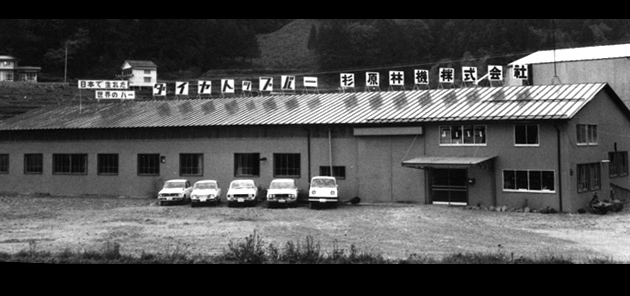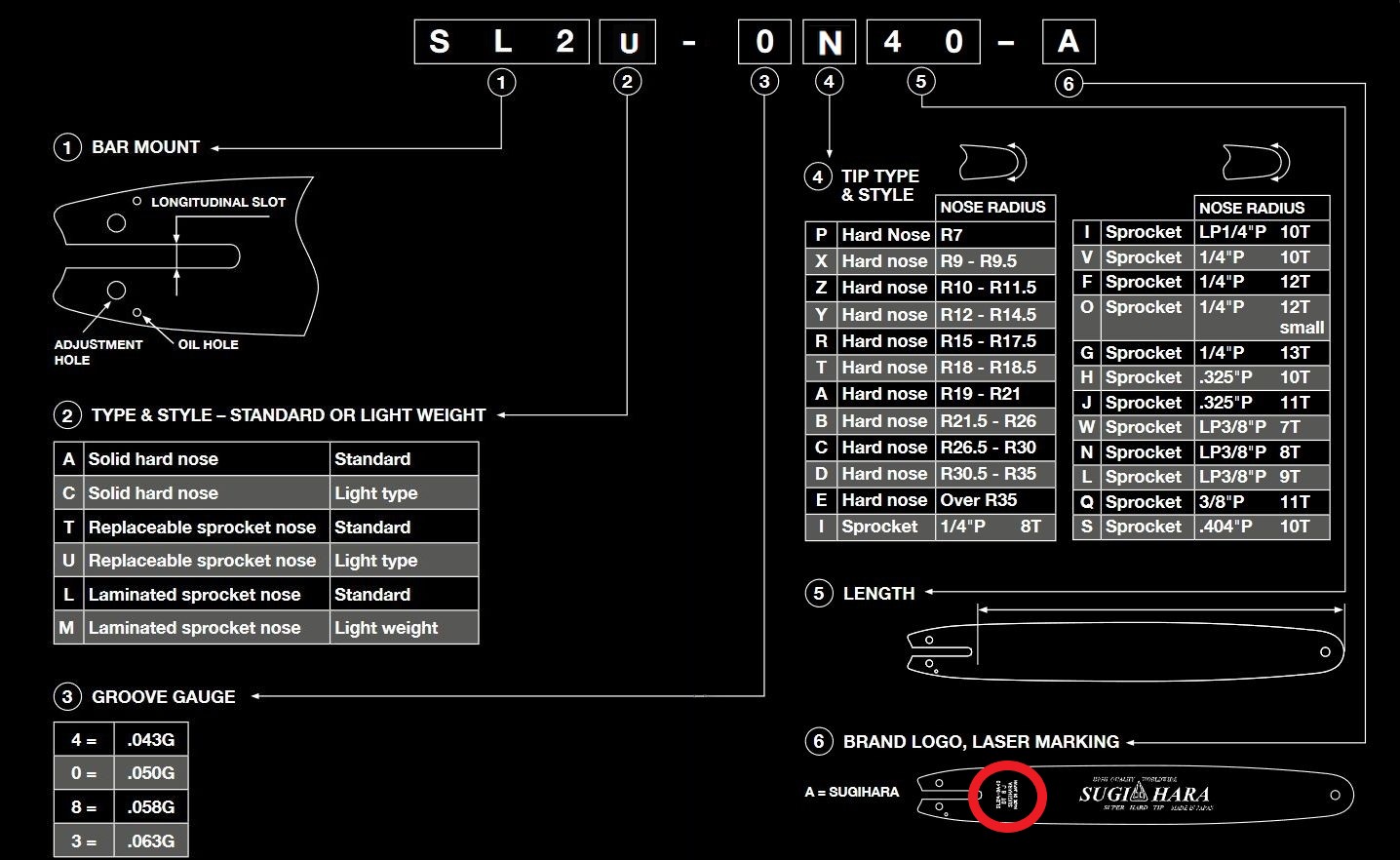What makes a Sugihara bar so good? This is a difficult question to summarise easily.
Sugihara bars started manufacturing chainsaw bars in 1967 by Hideo Sugihara. Japan has always had a reputation for excellence forging and working steel. Having the knowledge to manufacture quality chainsaw bars is not something that is gained overnight. It is a complex process of which cutting out the initial bar is only one part.
Sugihara bars have been produced by the Sugihara family since the factory began and knowledge has been passed from father to son. Tomo Sugihara (son of Hideo Sugihara) grew up understanding and building chainsaw bars. Yuki Sugihara (son of Tomo Sugihara) now heads the marketing department of the company. Many of the employees who work in the factory have worked there for one or even two generations. Other manufacturers may produce in different factories in different parts in the world. Sugihara bars have always been produced in the same factory by the same family.

It is interesting to note that Tomo and Yuki Sugihara will often visit their customers around the world in person. And last year they visited our company here in the UK. Despite the jet lag and a gruelling schedule they still made time to talk about their products and they took a keen interest in our comments about future bar types and designs.
This included looking at bar designs exclusively for www.sugiharabarsuk.co.uk and www.chainsawbars.co.uk. For example longer carving bars and new multi mount SV bars. Many of these are now available to buy off those websites.
Steel has different properties dependant on how it is heated then cooled. Sugihara bars may go through the process of heating and cooling up to 4 times on different parts of the bar in order to gain maximum performance. The rails need to be accurately cut and hardened but over hardening can make them brittle. The bar body needs to be stiff yet flexible. We have used a number of different chainsaw bars over the years including all the major manufactures. Sugihara bars are the hardest wearing bars out there. Even their laminated bars will outlast rivals.
On the single piece pro and light type bars the hardness of the rails is measured at HRC 60. Compare this to Stihl at HRC 57 and Oregon at HRC 55 and it is clear why these bars last longer. They are so hard they resist most flat files when it comes to bar dressing.
Not only do they have superb durability they also come as a huge range of chainsaw bars. This from the smallest 8” dime tip carving bar up to a 46” solid single piece bar. 46” is the maximum they can manufacture as in Japan there is little demand or need to make longer bars.
There are a number of details that differentiate Sugihara bars from others. For instance each replaceable sprocket nose bar comes with a matched nose sprocket.
Other bars will come with a generic .063” (1.6mm) gauge nose sprocket where Sugihara noses come in .050,.058 and .063 dependant on bar gauge. There is little or no gap between the nose and the bar body. Replacement noses are available to get the most life from the bar and nose changing kits allow the customer to change the nose themselves. Many bars are unique to Sugihara such as 1/4” pitch replaceable sprocket nose bars, light type bars for top handled saws (rather than just laminated bars), 1/4” sprocket nose options for smaller saws, the smallest nose carving bar in the world (light type solid bar) with tip diameter of only 7mm (compared to dime tip bars of 9mm).
Solid and light type bars have a hard wearing melamine resin finish – the steel is flawless and polished and there is no need to hide blemishes or scratches with paint.
Tolerances are exact in both the bar body and the bar groove. There are few if any other bars out there that match the eveness and tightness of a Sugihara bar groove. Quality control is the resonsibility of everyone at the factory and is checked at all production stages.
Sugihara chainsawbars come in 3 types
Sugihara Pro Laminated bars
These bars are similar to the Oregon Pro lite and Pro Am and Stihl Rollamatic chainsaw bars. They feature a sandwich construction where 2 pieces are welded together with the internal space filled with a punched blank. These are less expensive to produce and can be made lighter in weight.

Sugihara Pro Solid bars
Formed and cut from a single piece of steel the pro solid bars have the best durability and stiffness characteristics. They are lacquered rather than painted. Ultimate durability and performance mean this is the benchmark bar. These bars carry a red label.

Sugihara Light Type Pro bars
The light type bars are effectively the solid bars but with sections carefully removed then filled with resin. This helps retain all the characteristics of a solid bar yet makes the bar lighter. Light type Sugihara bars are the most sought after due to their high performance and lighter weight. They are easily recognised by the white resin sections and black labels.

So that explains a little about why Sugihara bars are as good as they are and why there is an ongoing commitment to improve quality and design with new bars being built all the time.
The durability of these bars is best illustrated by a testimonial given by Adam Dufour, owner of D&D Enterprises and the Adam Dufour Logging Company with his comment “Most loggers wear out chainsaw bars with their chainsaws. I have worn out chainsaws with my Sugihara chainsaw bar.” Dufour uses both Dolmar and Husqvarna chainsaws in his logging operations and although this is stretching the truth it does give an idea of these bars longevity.
Below is a chart that explains the identifying marks stamped on the tail of each bar:



